INTRODUCTION
Hard disk drive capacities have increased more (skyrocketed is more like it) in the past 5 years than in the 20 years prior and although we've yet to reach the point which I’ve been waiting for (drives exceeding 20TB in capacity) still we do have models with up to a massive 10TB of available space. Of course although not really a surprise such models are usually equipped with SAS connectivity and are primarily aimed towards business users and professionals who require both capacity and performance. Strangely enough however although the new 12Gb/s standard has been around for quite some time now we haven't really seen many models take that step so most in the market still support the previous generation 6Gb/s standard. Today we will be putting through our usual tests one of the latest HDDs to hit the market by our friends over at Seagate, the Enterprise Capacity 3.5 V4 6TB SAS 12Gb/s (ST6000NM0034) model.
Founded in 1979, Seagate is the leading provider of hard drives and storage solutions. From the videos, music and documents we share with friends and family on social networks, to servers that form the backbone of enterprise data centers and cloud-based computing, to desktop and notebook computers that fuel our personal productivity, Seagate products help more people store, share and protect their valuable digital content. Seagate offers the industry’s broadest portfolio of hard disk drives, solid-state drives and solid-state hybrid drives. In addition, the company offers an extensive line of retail storage products for consumers and small businesses, along with data-recovery services for any brand of hard drive and digital media type. Seagate employs more than 50,000 people around the world.
Having already reviewed the Seagate Enterprise Capacity 3.5 V4 6TB SATA model we know that it's nearly identical to its SAS brother since both rotate at 7200RPM, share the same average seek time of 4.16ms, have 128MB of cache memory, support PowerChoice technology, have an MTBF of 1.4 million hours and are covered by the same 5 year warranty. However these two models do have their differences so whereas the SATA model can achieve a max sustained transfer speed of 216MB/s the SAS 12Gb/s variant can go up to 226MB/s. That's not all however so the SAS model also supports improved data integrity via T10 DIF (data integrity field) a technology which basically adds a total of 8 bytes of protection data per sector (extends the usual 512 bytes to 520 bytes). On paper the SAS 12Gb/s model seems to be ahead compared to its SATA III brother so let's find out.
SPECIFICATIONS AND FEATURES


THE ENTERPRISE CAPACITY 3.5 V4 6TB SAS 12GB/S
We received the sample by Seagate in its bulk form so nothing aside that was in the box (Seagate actually send us two samples but since our LSI 12Gb/s card doesn't support RAID for now we had to test them in single mode).
Appearance-wise the housing of the SAS variant is identical to the SATA one so nothing new to see here.
At the top of the drive we find the usual information sticker printed on which is the drive product number, serial number, electrical requirements, warning/certification logos, connectivity, country of manufacture, installed firmware version and the coded factory roll out date (2014-05-03 in this case).
The rear side is also identical to that of the SATA model and of course all of the modules are placed on the interior of the PCB for increased protection.
Four pins (probably used for FW updating) and the SAS connector are placed at the rear end of the drive.
TEST BED
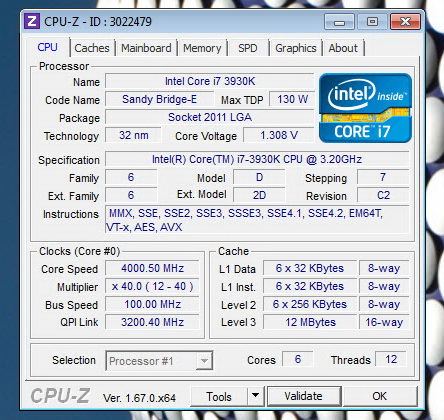

TESTING METHODOLOGY
Thoroughly testing hard disk and solid state drives may require time and lots of patience but that's just about it. Of course that doesn't mean that one must take it lightly, at least not when people actually base their decision on your results. Because of that we always like to take things a step further not because we have to but because we want to be almost 100% certain of the results we get and post in our charts.
SAS drive testing however is more complicated than testing regular SATA drives and so although we use the same 6 benchmark suites as with SATA tests in an effort to bring you the most accurate results across the board things are a bit different since we are required to configure/tweak some of those programs to address compatibility issues with the SAS card used. This may not be exactly "fair" for the SAS drive/s in hand since we test them with much heavier read/write loads in some of the suites used but that's the only way to get realistic results without taking into account certain extreme card-specific performance optimizations. So once again the benchmarking applications we use are the AIDA64 suite (former Everest Pro), HD Tune Professional (Partial Test/Full Accuracy), HD Tach RW (Full Bench), ATTO (2GB Length), Sisoftware Sandra Pro and Crystal Disk Mark 64bit (2000MB mode). These benchmark tools are the best at what they do and as you will also see later on their results more or less agree. Each test is performed a total of 6 times and then the average is recorded into the charts. All tests were performed in a fresh Windows 7 Ultimate x64 installation with every update installed up to December 22nd 2014.
TEST RESULTS - AIDA64 / ATTO
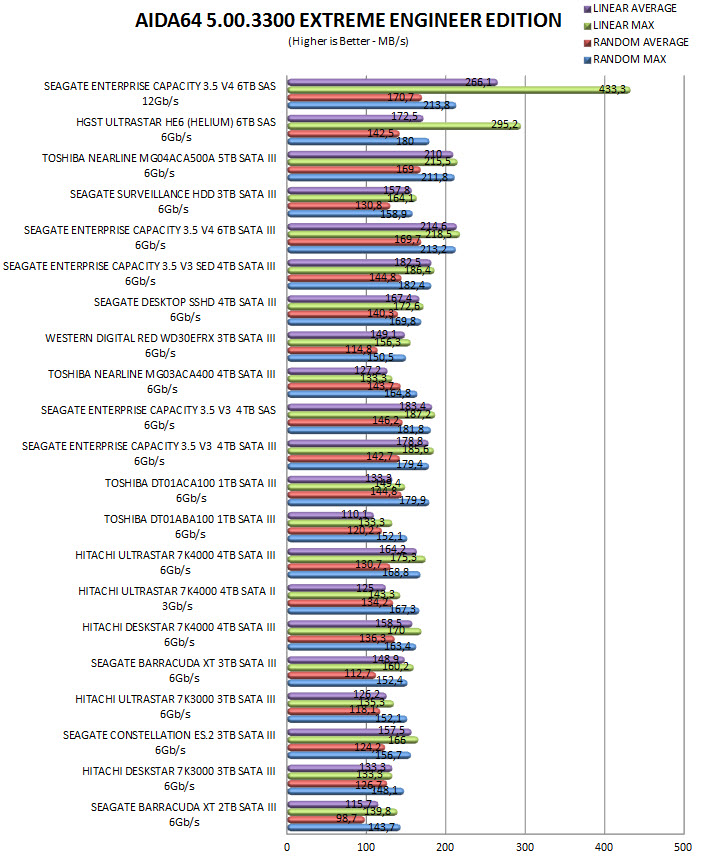
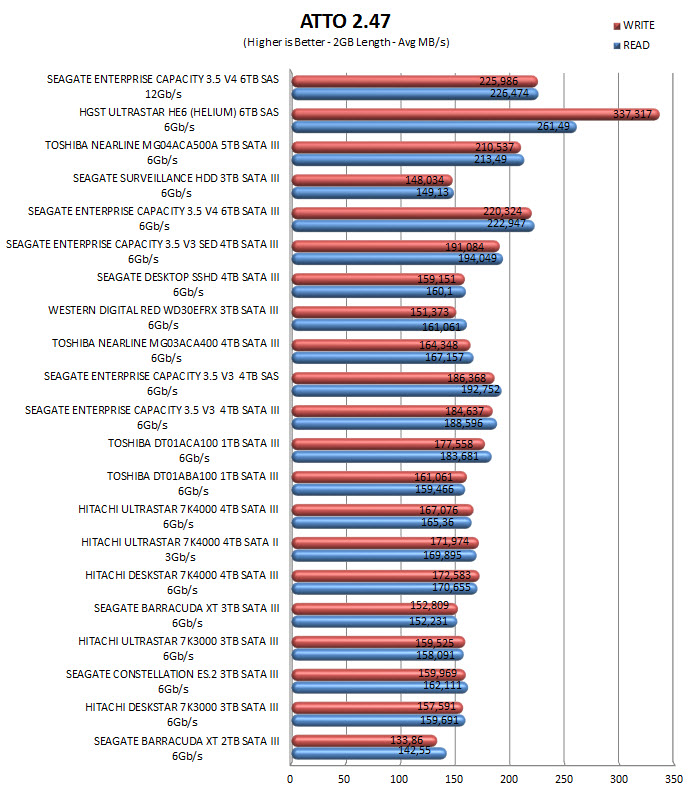
TEST RESULTS - HD TACH RW / HD TUNE PRO
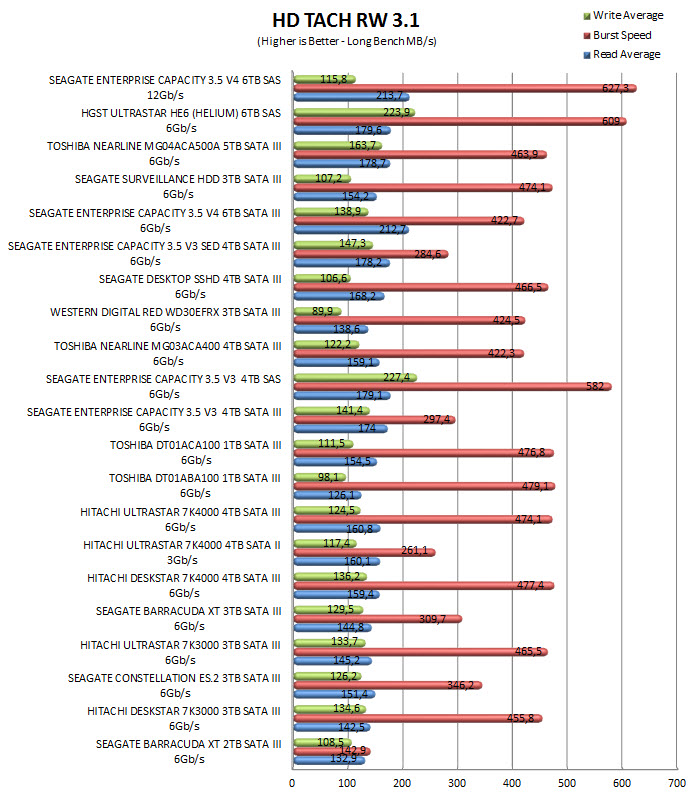
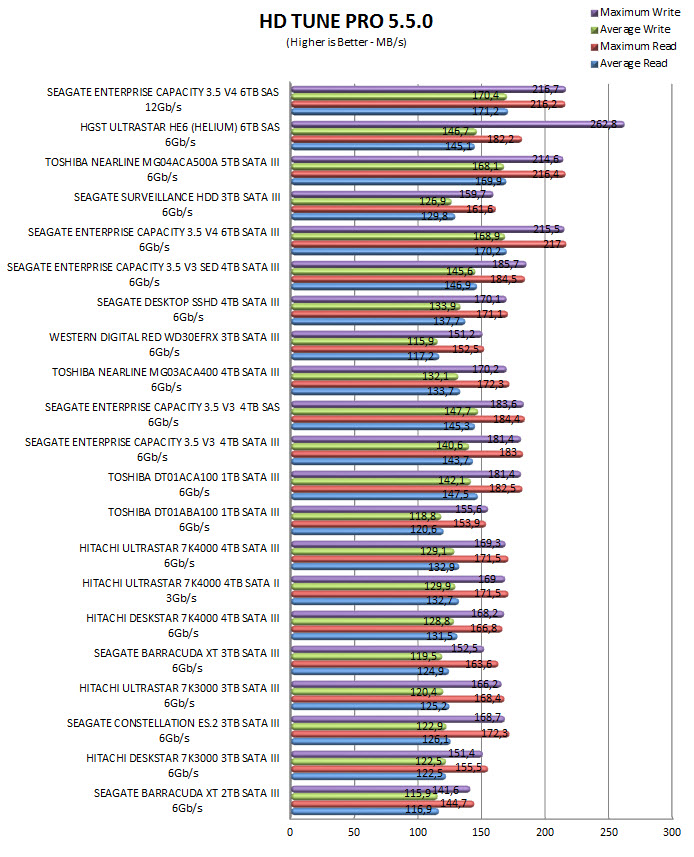
TEST RESULTS - SISOFTWARE SANDRA PRO / CRYSTAL DISK MARK X64
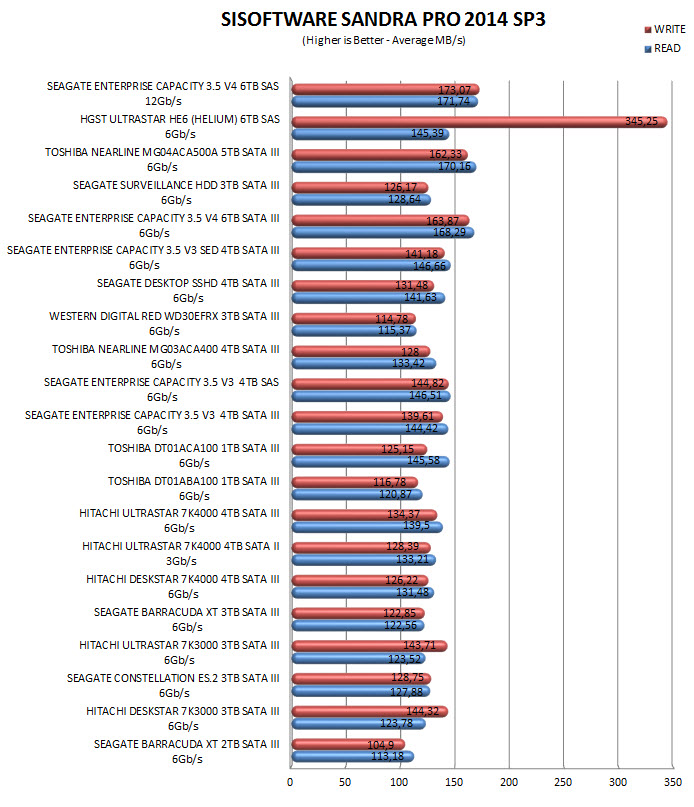

TEST RESULTS – TEMPERATURES / NOISE LEVELS


CONCLUSION
When we finally started testing the SAS 12Gb/s variant of the Enterprise Capacity 3.5 V4 6TB model we had two goals in mind, first to find out how it compared to its SATA brother and second to see if it would top our charts. Well having tested several SAS HDDs in the past we never really expected for a SATA model to surpass its SAS brother and you clearly tell by our charts that we had no surprises there. However although the Enterprise Capacity 3.5 V4 6TB SAS 12Gb/s did top our charts it didn't do so easily since the Ultrastar HE6 by HGST gave it a run for its money and even managed to surpass it in quite a few tests. That being said to be completely fair and honest with all of you (and with Seagate) when we tested the Ultrastar HE6 we did so with the MegaRAID 9271-8i SATA/SAS card by LSI/Areca which thanks to its specifications should do better compared to the 9300-8i card when paired with an HDD even though it doesn't support 12Gb/s (with an SSD however things would be different). So although our results can't be very far off do keep that in mind when comparing the Enterprise Capacity 3.5 V4 6TB SAS 12Gb/s with the Ultrastar HE6 6TB SAS 6Gb/s (we will test the Seagate drive with the same card in the near future and if our results change quite a bit we will post them here).
We are just a couple of hours away from Christmas and as i type these lines the Enterprise Capacity 3.5 V4 6TB SAS 12Gb/s (ST6000NM0034) drive by Seagate retails for USD435.50 inside the USA (Amazon.com) and for 475Euros inside the EU (Amazon.co.uk) a price tag which although high is nothing we didn't expect from what is clearly the fastest 6TB HDD in the market. Of course the difference in performance between the Enterprise Capacity 3.5 V4 6TB SAS 12Gb/s model and the Enterprise Capacity 3.5 V4 6TB SATA III model doesn't really justify spending more on the drive and quite a bit for an SAS 12Gb/s card (which you will need unless you own one of the latest mainboards with built-in 12Gb/s SAS controllers) so unless you're looking for superior data protection you don't really need to go there. Seagate has once again taken the lead in the HDD industry with the Enterprise Capacity 3.5 V4 6TB SAS 12Gb/s HDD (their 8/10TB drives should be just as fast if not even faster) and that's why it gets our Platinum Award.
 PROS
PROS
- Enterprise Class Quality
- 1.4 Million Hours MTBF (Mean Time Between Failures)
- Top Of The Charts Performance
- 6TB's Capacity
- PowerChoice Technology
- T10 DIF Technology
- Temperatures/Noise Levels
- 5 Years Warranty
CONS
- Price (For Some)
- 12Gb/s vs 6Gb/s Performance Difference (HDDs)

 O-Sense
O-Sense





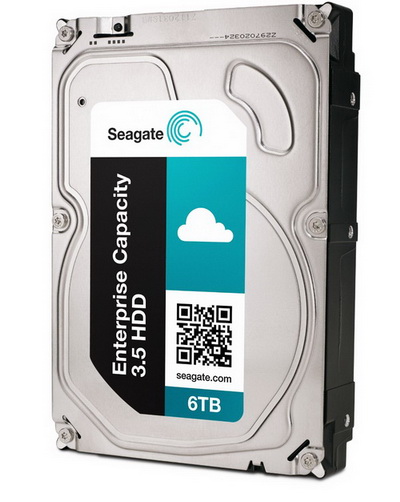
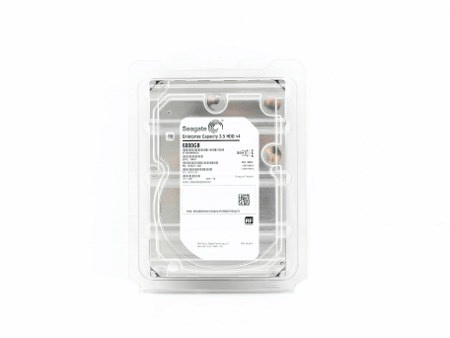
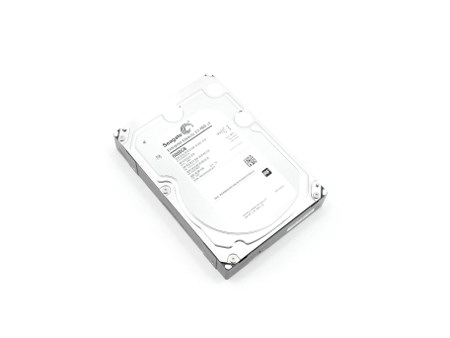
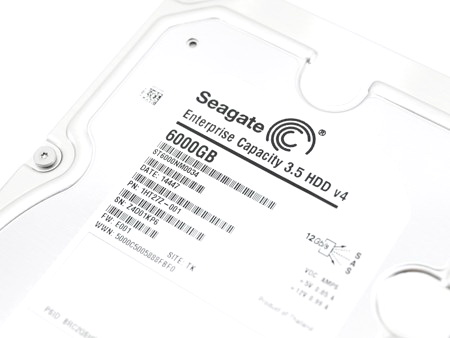

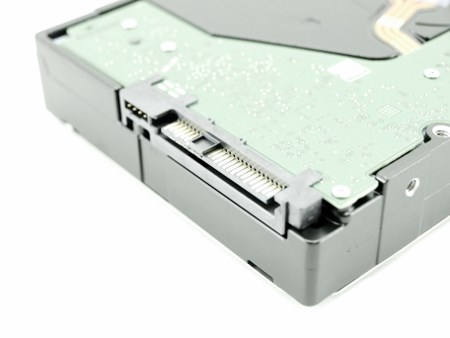
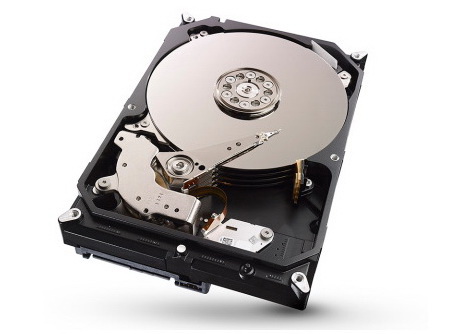


.png)

